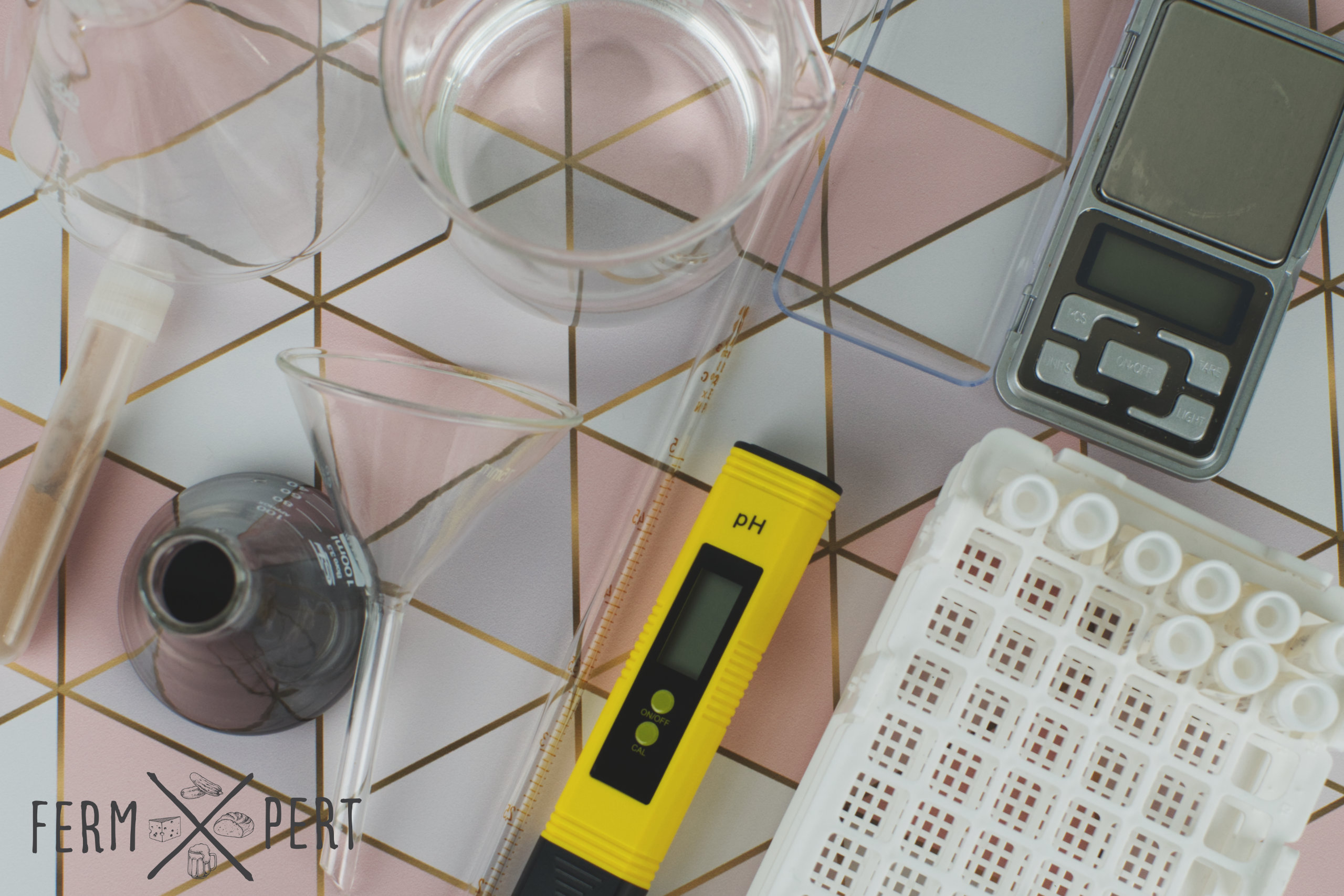Submerging foods in a solution of acetic acid is a common way of preservation. Sometimes it turns out that coming up with the correct water to vinegar ratio is a bit of a problem, especially if the only vinegar available has different acidity than usual. However, there are two simple formulae that can be used to always calculate the correct ratios.
Acetic Acid Concentration
Depending on one’s preference, a vinegar solution can have varying acid concentrations. The lowest value I’ve come across was 0.45%. The highest, 5%. The vinegar solution can sometimes have an additional role, such as an ingredient of a ketchup or a hot sauce. In such a scenario, theoretically, the required concentration can be even higher.
It’s convenient to know the target concentration of the solution. Many recipes provide only a volume ratio of water to vinegar, without specifying its acidity. In Poland, it’s usually 10%, though different types of vinegar can go as low as 4%. This can vary between countries or different producers. Swapping one vinegar for another can therefore result in a significant (noticeable in both aroma and taste) change of the solution concentration.
Formulae
In order to calculate the water to vinegar ratio in a vinegar solution, the following input data is required:
- Cv – vinegar acidity in % (eg. 10)
- Cs – target solution concentration in % (eg. 1.25)
- Ms – total mass of the solution in grams (eg. 800)
As a result, it’s possible to calculate the following:
- Mv – target vinegar mass in grams
- Mw – target water mass in grams
Here are the formulae:
Mv = Ms * Cs / Cv
Mw = Ms – Mv
Disclaimer: my formulae use mass, which neccessitates an assumption that the densities of water and acetic acid are equal. This isn’t exactly correct: acetic acid has a slightly higher density (1.05 g/cm3, as opposed to water’s 1 g/cm3). The difference, however, is small enough to consider it irrelevant.
Example
I will calculate the ratios using example input data:
- Cv = 10 (typical acidity of white distilled vinegar in Poland)
- Cs = 1.25 (a relatively mild solution I use for pickling cucumbers)
- Ms = 800
Mv = 800 * 1.25 / 10 = 100
Mw = 800 – 100 = 700
So, in order to obtain 800 grams of solution with a 1.25% acetic acid concentration, I need to mix 700 g of water and 100 g of 10% acidity vinegar.

